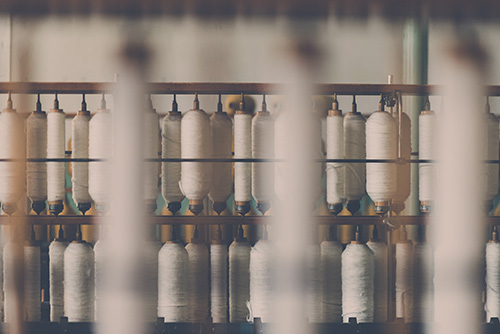What is the solution?
Structured processing of pre-consumer materials to reduce the consumption of resources such as water or soil. This can help preserve the value of materials and create both ecological and economic value in the long term.
How does it #MoveTheDate?
Circular fashion aims not only to reduce resource use, but also recycle pre-consumer material and turn it into valuable products, reducing waste. Additionally, as only sustainable materials are used, such as controlled organically grown cotton, the effect increases. The use of organic cotton as virgin material alone saves an average of 91% water and 46% CO2 compared to conventional cotton crops.
How is it scalable?
Only 1% of worn clothes are recycled. One major reason is that technologies to recycle and recreate materials are still missing. Providing this technology and creating a scalable solution for organic pre-consumer material, in addition to the recycling of post-consumer material, will further increase the impact of circular fashion in the future.
What is the solution?
Structured processing of pre-consumer materials to reduce the consumption of resources such as water or soil. This can help preserve the value of materials and create both ecological and economic value in the long term.
How does it #MoveTheDate?
Circular fashion aims not only to reduce resource use, but also recycle pre-consumer material and turn it into valuable products, reducing waste. Additionally, as only sustainable materials are used, such as controlled organically grown cotton, the effect increases. The use of organic cotton as virgin material alone saves an average of 91% water and 46% CO2 compared to conventional cotton crops.
How is it scalable?
Only 1% of worn clothes are recycled. One major reason is that technologies to recycle and recreate materials are still missing. Providing this technology and creating a scalable solution for organic pre-consumer material, in addition to the recycling of post-consumer material, will further increase the impact of circular fashion in the future.

According to the Ellen MacArthur Foundation, more than $500,000,000,000 of value is lost every year due to the under-utilization of clothing and the lack of recycling. For instance, in Europe each person, on average, buys 26 kg and disposes 11 kg of clothing away every year.
This is where circularity can decrease the negative impact of fashion. Using the concept of circular fashion, the fashion industry can design products to be:
-
used more
-
made to be made again
-
made from safe and recycled or renewable inputs
There’s no benefit in waiting!
Acting now puts you at a strategic advantage in a world increasingly defined by ecological overshoot. Countless solutions exist that #MoveTheDate. They’re creative, economically viable, and ready to deploy at scale. With them, we can make ourselves more resilient and #MoveTheDate of Earth Overshoot Day. If we move the date 6 days each year, humanity can be out of overshoot before 2050.
